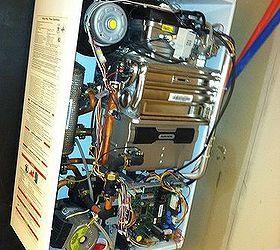What happens then is water displacement. The sandy partials that collect on the bottom of the tank displaces the water ever so slightly. This results in hot spots on the bottom of the tank. When this occurs the flames overheat the tank and begin to break down the steel. After many years this breakdown ends up becoming a tiny hole that is filled with this debris, oftentimes preventing the leak.
However if you decide to drain your heater after many years of not doing it, or all of a sudden you start using the heater more then normal, this sediment that has been plugging that tiny hole is flushed out, often resulting in a leak in a few days after.
So the moral is to flush yearly, but if you have not done so for many years to not touch it or you will end up with a leak.
After draining you may find that the flush hose bib valve at the bottom will not turn off. This is because of some sediment that has blocked the valve and prevented it from turning off. If that happens a hose bib cap can be purchased at the local hardware store for about $1.50 put that on and your good to go. The photo is the inside of such a valve on a hot water heater that was 6 years old and had never been flushed. We tried to empty this tank to replace with a new high efficiency tankless, next photo but the hole was so small it only trickled out. The new heater will produce enough hot water for two showers, one laundry and one dishwasher to run all at the same time.



Original article and pictures take http://www.hometalk.com/1183201/sediment-in-a-hot-water-heater site
Комментариев нет:
Отправить комментарий